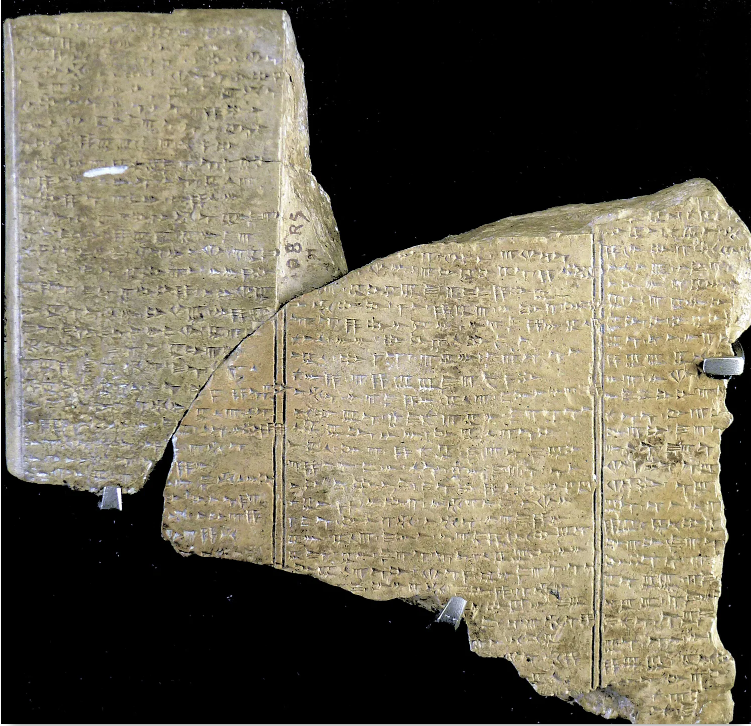HOME / OUR NAME
OUR NAME - BAAL
“THE BAAL PROJECT is born out of our family’s land high up in the Northern mountains of Lebanon. It is a symbol of our deep-rooted ties to our Levantine ancestral heritage and traditions.
In ancient folklore, BAAL was a mighty and mystical god revered throughout the Levant as the Lord of Rain and Dew. We like to think BAAL watches over our groves, protecting our centenarian olive trees and keeping them strong and fruitful.”
The name BAAL is an ode to Lebanon’s Phoenician history. In ancient folklore, BAAL was a mighty and mystical god revered throughout the Levant as the Lord of Rain and Dew. As the Phoenician legend goes, BAAL was locked in an eternal war against his enemy Mot, the Lord of Death and Sterility. When BAAL lost the battle, drought and famine would reign for seven long years—but when victorious, those seven years would be filled with fertility and abundance. We like to think BAAL watches over our groves, protecting our centenarian olive trees and keeping them strong and fruitful.
FUN FACT! In Lebanon, the older generation can often be heard saying “El aard baal” or “الارض بعل“. This expression means that the trees on that land are rainfed and not watered by man. And yes, this expression is a reference to BAAL himself who brought rain and fertility to the land!
A stele of BAAL inside the Galerie d’Angoulême of the Louvre Museum in Paris, France (Source: https://www.louvre.fr/en/explore/the-palace/treasures-of-the-eastern-mediterranean)
“Universal god of fertility, worshipped in many Middle Eastern communities, responsible for the welfare of the earth and the regularity of the falls of dew and rain; god of storms and of the sky.”
A closeup of the stele of BAAL inside the Galerie d’Angoulême of the Louvre Museum in Paris, France (Source: Louvre Museum)
“This stela was found in Ugarit, modern-day Ras Shamra on the Syrian coast, which was the capital of a prosperous kingdom in the 2nd millennium BC. It depicts Baal, the god of storms, who wields a weapon that unleashes thunder and rain. The lance he thrusts into the ground evokes thunder striking the earth. The leaves sprouting from the lance recalls the vegetal world.”
In ancient history, BAAL has been depicted in many different ways, but generally with a bull horned, helmet, a raised hand with a thunderbolt in his hand, and holding a long grain of wheat in the other hand (representing rain and vegetation). Baal was referred to historically as Hadad or Adad but also sometimes just as “Baal” which was a word which means “Lord.”
Assyrian soldiers of Ashurbanipal carrying a statue of Adad (also known as Ramman), the god of tempest and thunder. Drawn by Henri Faucher-Gudin after Austen Henry Layard
Source: History of Egypt, Chaldea, Syria, Babylonia and Assyria, Vol. III, https://ia600307.us.archive.org/11/items/egypt03maspuoft/egypt03maspuoft.pdf, page 179
“BAAL the bringer of the autumnal rains and suppressor of the destructive flood waters. He probably wore a gold skirt and may have carried a mace in one of his clenched fists.”
Figurine of Baal, arms raised, horned helmet and short loincloth. Place of discovery: Ras Shamra = Ugarit
Source: Louvre Museum (https://collections.louvre.fr/en/ark:/53355/cl010143292)
Scarab (Dynasty 19–20, ca. 1295–1070 B.C.)
Source: Metropolitan Museum of Art (https://www.metmuseum.org/art/collection/search/565106)
“The underside of the scarab shows a standing male figure facing right, wearing a high conical headdress with a long streamer at the back and horns protruding from the front. He holds the Egyptian was-scepter, a symbol of power held by deities or royal figures. … Even though similar in shape, the man’s headdress should not be mistaken for an Egyptian White or Double Crown worn by the pharaoh; it is the headdress of the Levantine storm god Baal. Depictions of Baal appear in Egypt around the end of the Middle Kingdom, but his image is more prevalent in Egyptian art of the New Kingdom and reaching a peak in the Ramesside period, when several Levantine gods became important in Egypt. ”
“Clay tablets engraved with cuneiform script preserving the Ugaritic poem known as the Baal Cycle, a story featuring gods from Canaanite-Phoenician religion. The Baal Cycle tells the story of the sea god Yamm's conflict with the fertility god Baal, his defeat, and Baal’s supremacy over chaos and death. The tablets containing the Baal Cycle were unearthed in the excavation of Ugarit (in modern-day Syria) following the ancient city’s discovery in 1928 CE. These tablets date to c. 1500 BCE but are thought to have been a written record of a much older story passed down by oral transmission.”
Source: World History Encyclopedia
Historically, BAAL (also called Hadad) was portrayed wearing a helmet with the horns of a bull, and often holding in his hand what has been described as both a lightening bolt or a stalk of wheat — all representing the rain and fertility he brings to the land. Therefore, we worked with Lebanese Beirut-based graphic designer Zenobie to create our own depiction of BAAL based on these historical details, you can see our logo below:
Our logo inspired by historical depictions of BAAL.






